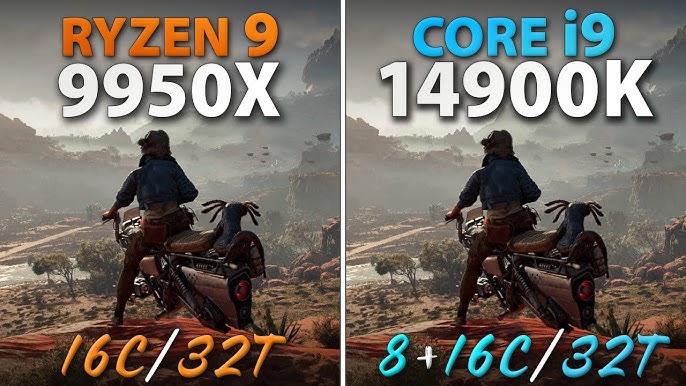Choosing the Right CPU for Video Editing and Rendering
In the modern content creation space, whether you’re working with 4K video footage, animating complex motion graphics, or rendering 3D models, your processor plays a pivotal role. The debate of AMD vs Intel editing performance has grown more relevant than ever in 2025, as both companies deliver CPUs with high core counts, advanced cache structures, and AI-enhanced processing. To identify the best CPU for video projects and real-time rendering CPU tasks, this article explores benchmark-backed performance, real-world multitasking efficiency, and software-specific advantages.

Core Architecture and Thread Count: The Backbone of Performance
Content creation tools such as Adobe Premiere Pro, DaVinci Resolve, Blender, and After Effects thrive on multi-threaded performance. Here’s how the latest chips from each brand stack up in raw specs:
| CPU Model | Cores/Threads | Max Boost Clock | Cache | Architecture |
|---|---|---|---|---|
| Intel Core i9-14900K | 24 (8P + 16E) | 6.0 GHz | 36MB | Raptor Lake |
| AMD Ryzen 9 7950X | 16/32 | 5.7 GHz | 80MB | Zen 4 |
| AMD Ryzen 9 7950X3D | 16/32 | 5.7 GHz | 144MB | Zen 4 + 3D V-Cache |
| Intel Core i7-14700K | 20 (8P + 12E) | 5.6 GHz | 33MB | Raptor Lake |
Intel’s hybrid architecture (Performance + Efficiency cores) performs admirably in mixed workloads, while AMD’s chiplet design and massive cache advantage offer smoother experiences in long renders and large timeline management.
Video Editing Benchmarks: Adobe Premiere Pro and DaVinci Resolve
Premiere Pro 2024 Benchmark Scores
| Processor | Export Time (4K, 10 Min Video) | Playback Smoothness | Overall Score |
|---|---|---|---|
| Ryzen 9 7950X | 2 min 49 sec | Excellent | 93 |
| Core i9-14900K | 3 min 03 sec | Excellent | 90 |
| Ryzen 9 7950X3D | 2 min 55 sec | Very Good | 91 |
| Core i7-14700K | 3 min 40 sec | Good | 84 |
While Intel offers high boost clocks, AMD’s superior thread handling and cache often shave seconds off render times, especially in CPU-intensive transitions, color grading, and nested sequences.
Rendering CPU for 3D & VFX Workloads
For creators using Blender, Maya, Cinema 4D, or Houdini, multi-threading, instruction set extensions (AVX-512 vs AVX2), and thermal performance are vital.
Blender 3.6 Classroom Render (Lower is Better)
| Processor | Render Time |
|---|---|
| Ryzen 9 7950X | 96 seconds |
| Core i9-14900K | 105 seconds |
| Ryzen 9 7950X3D | 101 seconds |
| Core i7-14700K | 122 seconds |
AMD’s superior core efficiency becomes evident during prolonged CPU rendering sessions, where Intel’s thermal output often leads to thermal throttling under air cooling.
Thermal Management and Power Efficiency
Long rendering sessions put stress not only on the CPU but also on the system’s thermal and power capabilities.
| Metric | Ryzen 9 7950X | Core i9-14900K |
|---|---|---|
| TDP | 170W | 253W |
| Peak Temp (Air Cooled) | ~83°C | ~96°C |
| Average Power Draw | 142W | 215W |
AMD delivers better performance-per-watt, allowing workstations to remain cooler, quieter, and more stable under load.
Multitasking and Workflow Fluidity
Professional editors often run multiple applications at once—e.g., encoding in Media Encoder, scrubbing through Premiere, and syncing audio in Audition. This environment demands high IPC (Instructions Per Clock) and thread distribution.
-
Intel excels at foreground tasks with minimal latency thanks to high single-core boost.
-
AMD thrives in background-intensive multitasking, with a more consistent workload balance due to SMT (Simultaneous Multithreading).
For creators who batch export while continuing to edit, AMD’s stability and smoother thread prioritization reduce interface lag.
Platform Longevity and Upgrade Path
When investing in a workstation, futureproofing matters. Socket longevity directly affects upgrade potential.
| Brand | Current Socket | Expected Lifespan |
|---|---|---|
| Intel | LGA 1700 (14th Gen) | Ending in 2025 |
| AMD | AM5 (Ryzen 7000–9000) | Through 2027 |
AMD’s AM5 platform ensures multiple future upgrades, including Zen 5 and Zen 6, offering cost-efficiency for long-term planners.
Pricing and Creator-Focused Value
| Processor | MSRP | Current Street Price (July 2025) | Best Use |
|---|---|---|---|
| Ryzen 9 7950X | $699 | $579 | All-round content creation |
| Core i9-14900K | $649 | $615 | Speed-focused workstations |
| Ryzen 9 7950X3D | $699 | $599 | High-end rendering/gaming blend |
| Core i7-14700K | $439 | $420 | Budget-conscious creators |
The best value rendering CPU goes to AMD Ryzen 9 7950X, offering consistent performance across timelines, previews, exports, and simulation-heavy scenes.
Intel vs AMD: Software Optimization Insights
Intel Optimized Software
-
Adobe After Effects leverages Intel Quick Sync and single-threaded boost.
-
DaVinci Resolve benefits from higher bandwidth cores during live color correction.
AMD Optimized Software
-
Blender cycles and Eevee render engines scale perfectly with AMD’s thread count.
-
Premiere Pro background tasks (e.g., auto-save, scene detection) benefit from AMD’s thread prioritization and cache.
Best CPU for Content Creators in 2025
Choosing between AMD vs Intel editing CPUs hinges on your workflow preferences:
-
For video editors and renderers who prioritize multi-tasking and energy-efficient stability, AMD Ryzen 9 7950X is currently the best all-round choice.
-
For creators seeking real-time previews, single-thread strength, and Intel-exclusive encoders, the Core i9-14900K remains a competitive solution.
-
For hybrid creators who also game or simulate physics-based scenes, the 7950X3D offers cache advantages with versatile performance.
In 2025, AMD wins the crown for consistent performance, efficiency, platform longevity, and price-to-power ratio, making it the ideal CPU choice for professionals in video editing, 3D modeling, and content creation.




